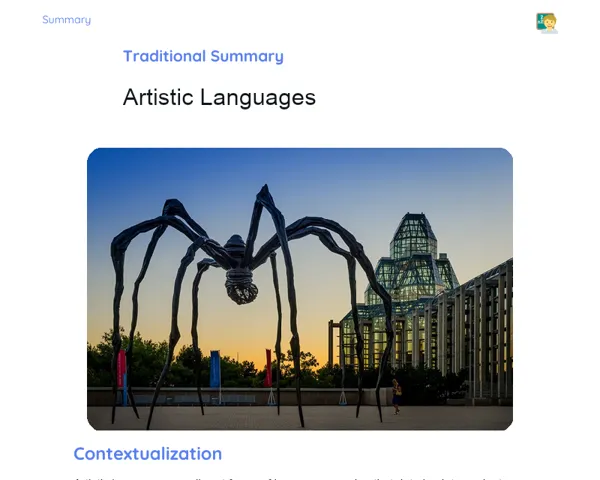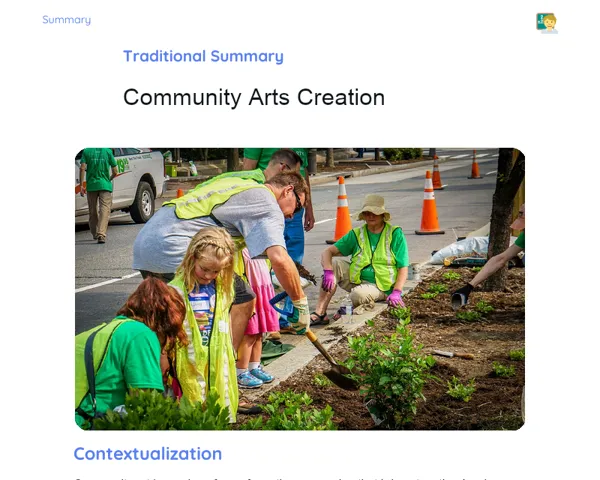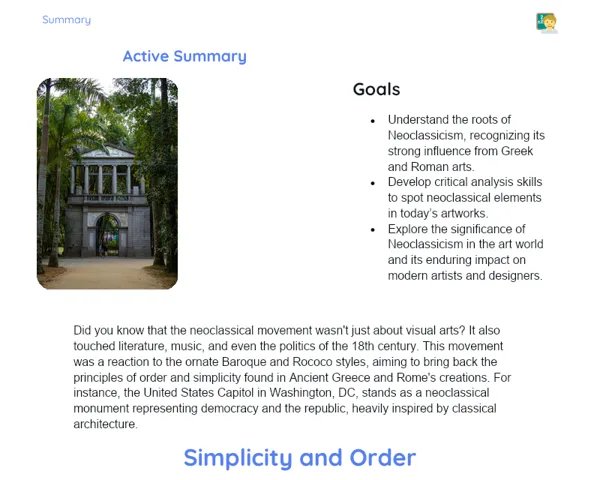Objectives
1. 🎨 Understand the Renaissance as a transformative cultural movement that embraced the influences of Classical Antiquity and reshaped our understanding of humanity and the world.
2. 🔍 Critically analyze Renaissance paintings and frescoes, spotting innovative artistic techniques and how humanist themes are depicted in mythological and religious artworks.
3. 🤝 Develop teamwork and creativity skills by engaging in hands-on activities that replicate Renaissance artistic techniques.
Contextualization
Did you know that Florence, Italy, was like the heartbeat of the Renaissance? This city wasn't just a hub for artists; it was a cauldron of scientific thinking and technological advancements. Artists such as Leonardo da Vinci were not just painters; they were inventors and scholars, showcasing how the Renaissance era connected art with science in ways that resonate in our lives even today!
Important Topics
Perspective Techniques
Perspective techniques were crucial during the Renaissance, enabling artists to depict space and depth in a lifelike manner for the first time in history. These techniques involve a vanishing point and converging lines leading to that point, creating the illusion of depth on a flat canvas. Masters like Leonardo da Vinci and Raphael were at the forefront of these techniques, dramatically changing how space was represented in visual arts.
-
Central vanishing point: this technique generates an illusion of depth, directing the viewer's eye toward the centre of the artwork.
-
Convergence of lines: parallel lines appear to come together as they approach the horizon, mathematically mirroring three-dimensional space.
-
Impact on artistic composition: perspective not only enhanced the visual reality of the works but also allowed artists to convey complex ideas of hierarchy and significance through spatial arrangement.
Humanism
Humanism was a cornerstone of the Renaissance, prioritizing individual potential and human values. This philosophy was reignited by the rediscovery of classical texts from Greece and Rome, celebrating human accomplishments in contrast to the God-centric views of the medieval era. Artists like Michelangelo and Botticelli infused their works with humanist themes, representing the human body with a level of precision and idealism previously unseen, symbolizing the potential and beauty of humanity.
-
Rediscovery of the classics: the study of ancient texts promoted reason, ethics, and human potential.
-
Representation of the human body: a fresh focus on anatomy and perfect proportions, showcasing admiration for human forms.
-
Influence on culture and society: humanism not only shaped art but also impacted education, politics, and science, cultivating a culture of learning and innovation.
Integration of Art and Science
In the Renaissance, there was no clear-cut line between art and science. Many artists were also scientists, explorers, and inventors. For example, Leonardo da Vinci is celebrated not just for his paintings like 'Mona Lisa' but also for his meticulous anatomy sketches and inventive contraptions. This merging of disciplines sparked a surge of creativity and innovation, as scientific principles were adopted to refine artistic methods and vice versa.
-
Artists as scientists: Leonardo da Vinci and fellow artists closely studied the natural world to enhance their artistry.
-
Technical innovations: detailed studies and experiments in fields like anatomy and optics led to the creation of more realistic artworks.
-
Enduring impact: this blend of knowledge paved the way for future advancements in both fields, influencing modern scientific methods and artistic expressions.
Key Terms
-
Renaissance: A cultural movement that began in Italy in the 14th century and spread across Europe, marking the transition from the Middle Ages to Modernity. It is highlighted by the rediscovery and re-evaluation of the artistic and scientific principles of Classical Antiquity.
-
Humanism: A Renaissance philosophy that placed the human being at the core of the universe, emphasizing individual worth and capabilities. This approach shifted the medieval focus from religious themes to celebrating human dignity and potential.
-
Perspective: An artistic technique refined during the Renaissance to portray three-dimensional spaces on two-dimensional surfaces. It utilizes vanishing points and converging lines to create the illusion of depth.
For Reflection
-
How did perspective techniques change the way artists depicted space in their creations? Consider the importance of this technique in the evolution of art.
-
In what ways did Renaissance humanism challenge the established norms and practices of the Middle Ages? Reflect on the impact of this paradigm shift on our contemporary society.
-
What is the legacy of the integration of art and science that began during the Renaissance for modern disciplines? Explore the relevance of this interdisciplinary approach in today’s world.
Important Conclusions
-
We delved into the Renaissance, a vibrant era that spanned Europe from the 14th to the 17th centuries, marked by the appreciation for Classical Antiquity and the rise of humanism.
-
We examined breakthrough artistic techniques like perspective, which revolutionized spatial representation in the arts, and discussed how humanism positioned the human experience at the forefront of artistic and intellectual pursuits.
-
We discovered how the blending of fields like art and science, as demonstrated by figures like Leonardo da Vinci, not only fueled innovation during the Renaissance but continues to shape our modern world.
To Exercise Knowledge
Create a painting inspired by the Renaissance using materials you can recycle. Focus on applying perspective techniques and try to weave in humanist themes we've discussed. Share your artwork with your classmates or on your school's social media to inspire each other!
Challenge
Renaissance Artist Challenge: Attempt to recreate a small invention by Leonardo da Vinci using items you find at home. Document your process in a journal and share your findings and creation with the class!
Study Tips
-
Take a virtual tour of one of the many museums housing Renaissance art collections, such as the Louvre or the Uffizi, and try to identify the techniques and themes we've studied.
-
Learn about the life of a Renaissance artist of your choice and discover how their innovations or artistic contributions relate to humanism and science.
-
Try writing a short essay on how Renaissance concepts can be applied to gain a deeper understanding of contemporary art or popular culture.



